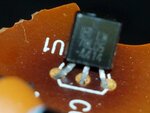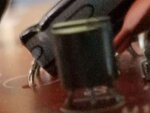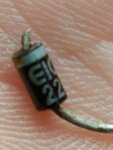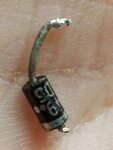Thejdman01
Newbie level 6

I have a large family room with 3 identical fans. One of the fans quit working. It has no pull strings only a remote. I really don't want to replace just one fan and keep the other 2 nor do I want to replace all 3. I have tried a few online sources and the manufacture and parts are no longer available for this fan. I took the fan receiver apart and think I found the problem, 2 pieces on the circuit board look brown and burnt. I would like to try replacing these 2 items and see if that fixes the problem, as I do know how to solder. I have tried 3 local computer stores, tv repair shops, etc trying to find out what these pieces are and get parts to fix the circuit board with no luck. There are no radio shacks or that kind of store in the area. If Someone would help identify the blown components so I could order what I need online and try to get this fixed i would greatly appreciate it. I'm not the.most tech savy person so if anyone could help identify the part what it is and size I would appreciate it.
























